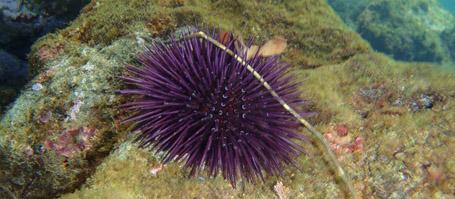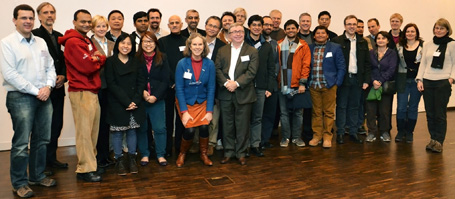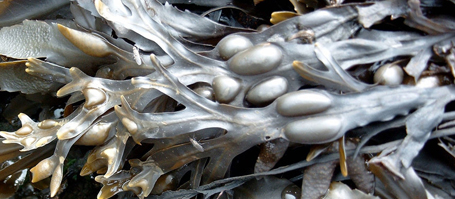Changing living conditions caused by climate change or ocean acidification – the decrease of ocean pH due to the uptake of human-induced carbon dioxide from the atmosphere – pose serious threats to marine organisms. In order to survive in a new environment, animals and plants respond via acclimation or adaptation. While “acclimation” describes variations in physiology, morphology or behaviour that do not enter the genetic code, “adaptation” means genetic changes and thus a heritable modification that improves an offspring’s chance to cope with new living conditions. Scientists from six leading institutions in ocean acidification research have summarized the current status of knowledge on evolution in the oceans: Which species are likely to evolve? How does their adaptive evolution alter ecological interactions in the oceans? And finally, will these reactions affect important ocean services such as carbon storage or food supply?
“Ocean acidification will definitely change marine ecosystems. If we want to foresee that change, it is absolutely necessary to understand how populations will adapt to it over time. If organisms adapt, their future reactions to ocean acidification might be different from what they are today”, says Prof. Thorsten Reusch. The evolutionary biologist at GEOMAR Helmholtz Centre for Ocean Research Kiel teamed with experts from Canada, Australia, the United States, Great Britain and Sweden to critically review previous studies and to give advice for future investigations. “Although Charles Darwin laid out his theory of evolutionary adaptation more than 150 years ago, this aspect has long been neglected in the context of ocean change.”
The evidence for evolutionary adaptation to ocean acidification comes mainly from two approaches. First, in experimental evolution studies, scientists have recently begun to expose organisms to conditions projected for the future for many generations in order to directly test for “evolution in action.” Such experiments are only possible in species that reproduce relatively rapidly, for example unicellular phytoplankton. One of the striking findings from laboratory experiments was that calcifying algae, which first suffer particularly in terms of growth and carbonate production from ocean acidification, can partly restore their functioning via evolution.
To estimate the evolutionary potential of multicellular organisms with generation times of one year or longer, the authors recommend measuring the heritable diversity among individuals in how they respond to ocean acidification today. “If some individuals are better at coping than others in a low-pH environment, we need to know how efficiently that ability can be passed on to the individual’s offspring and how quickly this trait will spread in the population,” explains Dr. Jennifer Sunday, postdoctoral research fellow at the University of British Columbia in Canada. The study summarizes recent findings that ample genetic variation exists for tolerating future acidity levels and that many fish and invertebrate species may adapt by natural selection. In future, more systematic studies might show which species may adapt the fastest and if this rate of adaptation is fast enough to prevent the species’ extinction.
“Understanding the impacts on single species is really only half of the story,” Dr. Piero Calosi, lecturer at the School of Marine Science and Engineering at Plymouth University summarizes. “We need to find out more about the evolutionary potential of organisms and at what price it comes. It is possible that other functions like growth, reproduction or longevity decrease when tolerance increases.” The team of scientists also notes that organisms go through different developmental stages with different possibilities to respond to a changing environment. They interact within complex communities and they are affected by a number of different stressors.
Because evolutionary potential cannot be assessed for all species, future work must strategically concentrate on ecologically or economically important species or on those most helpful for model calculations, the international expert team advises. Dr. Sam Dupont, researcher at the University of Gothenburg: “All of this is by no means trivial. But we found good examples showing that adaptation is not just possible in principle – we are now poised to understand the process at a more detailed level.”
Original publication:
Jennifer M. Sunday, Piero Calosi, Sam Dupont, Philip L. Munday, Jonathon H. Stillman, Thorsten B.H. Reusch: Evolution in an acidifying ocean. Trends in Ecology & Evolution. doi: 10.1016/j.tree.2013.11.001
Contact:
Prof. Dr. Thorsten Reusch (GEOMAR fb3-ev)
phone: +49 431 600-4550
treusch@geomar.de
Maike Nicolai (GEOMAR Communication&Media)
phone: +49(0)431 600-2807
mnicolai@geomar.de
…



